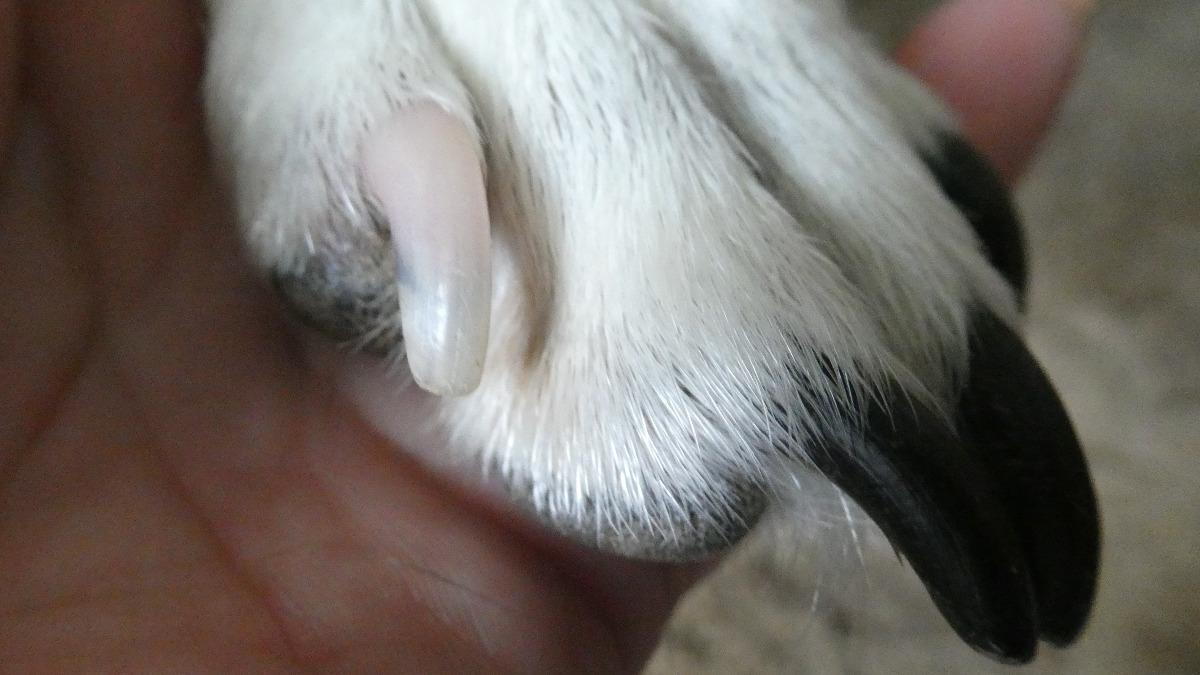Nail Trims

- posted: Aug. 01, 2020
Nail Trims
One of our most requested veterinary services has been nail trims. Trimming a dog’s or cat’s (or rabbit’s, bird’s, you name it!) nails should be easy, right? Unfortunately, this is often not the case. Consider yourself lucky if your pet willingly allows you to trim her nails. My own dogs require drugs, the assistance of my husband and lots of peanut butter to accomplish a nail trim!
First, why do dogs and cats hate nail trims so much? Dogs may view having their feet touched as a dominance display, may have increased sensitivity due to the many nerves in their pads or, they may simply be caught off guard when we attempt to touch or lift their paws. A previous unpleasant experience such as having a nail cut too short can also make nail trims difficult as dogs remember that pain and associate it with the next nail trimming experience. In short, our canine friends tend to be protective of their paws, and do not always take kindly to having them handled. Cats usually handle it a bit better, but some kitties may become stressed during nail trims too. So, what can we do to make the task of a dreaded nail trim a little easier?
- Start young. Teach puppies and kittens that nail trimmers are a good thing. Gather a bunch of tasty treats, your pet, and a nail trimmer. We’re not attempting to trim the nails here, we’re just getting your pet used to the sight of the nail trimmer. Show your pet the nail trimmer, give a treat. Put it behind your pack or up a sleeve, then bring it out again and give treats. Keep sessions short, no more than 5-10 minutes at a time. Once your pet realizes and anticipates that seeing that nail trimmer results in yummy treats, see if he will allow you to touch the trimmer to his body. If so, more treats! Once your pet is comfortable with being touched with the trimmer, touch it to his paw. If he tolerates his paw being touched—more treats! See the theme here? Nail trimmer = tasty treats = good experience! This is obviously a slow process, so be patient and don’t get discouraged.
- Once your pet is conditioned to expect good things when the nail trimmer comes out, you can also get her use to having her paws touched. Teach her to offer her paw to you, then take it and gently massage the paw. You can also gently touch and rub your pet’s paws when they are relaxed. Food treats can be used here, too, if necessary.
- We’re ready to trim some nails! If you have two people, it makes the task go a bit more smoothly, but you may be able to do it solo. Get those tasty treats or something like peanut butter that you can smear on a bowl, mat or easy-to-clean shower wall. Cats may like cheese, tuna or meat baby food. Ask your pet to sit and give paw if he knows this command. Fit the nail trimmer over the end of the nail and trim the tip—give a treat or do this while your pet is licking peanut butter—repeat. Black nails can be challenging since we can’t see the blood vessel. It may be helpful to get a bottle of styptic (clotting) powder if you’re going to trim your pet’s nails at home in case one gets a bit too short. If you do cut the quick, stop the nail trim, hold some pressure on the bleeding nail and apply clotting powder or corn starch to the nail. You may be able to trim all your pet’s nails in one sitting, but, if he or she becomes stressed, stop and finish the trim another time or even the next day. Nail trims should be done approximately every 4-8 weeks, depending on how fast your pet’s nails grow. Use of pheromones, calming supplements, or anti-anxiety vests like the thunder shirt may also be employed to take the drama out of trimming nails.
- As a last resort for dogs who are just too fearful or sensitive to accept having their paws handled for nail trims, your veterinary team may suggest using some mild anti-anxiety drugs to make things easier for your pet. No one likes to see cats or dogs struggling or anxious about anything. Medication may be a way to alleviate fear for your pet. Please keep in mind this is not the best course for every dog and understand that we offer this not because your dog is “bad” or because we don’t want to handle your pet to trim her nails, but rather because we want the experience to be as fear-free as possible.
These techniques can be used for dogs and cats of any age, just remember, it may take weeks or months to train your pet. If you’re not comfortable trimming nails at home, or your pet is just not a fan, leave it to the pros; our Patton Veterinary Team is here to help!
This blog brought to you by the Patton Veterinary Hospital serving Red Lion, York and the surrounding communities.
http://www.vetstreet.com/our-pet-experts/take-the-stress-out-of-trimming-your-dogs-nails
Location
Patton Veterinary Hospital
425 E Broadway
Red Lion, PA 17356
